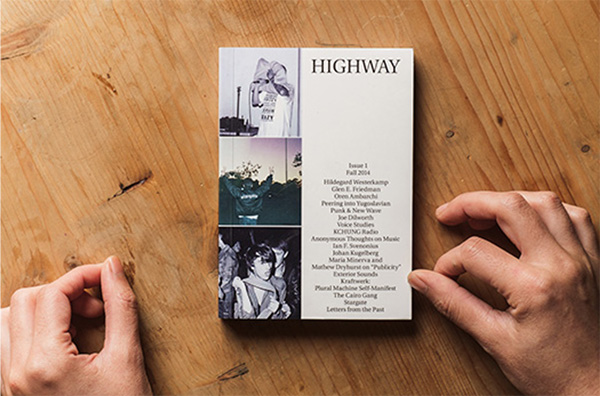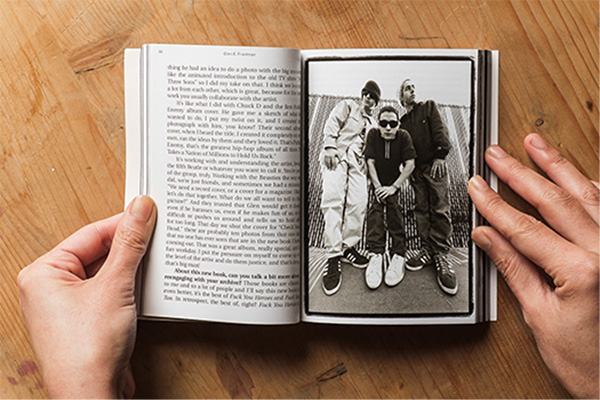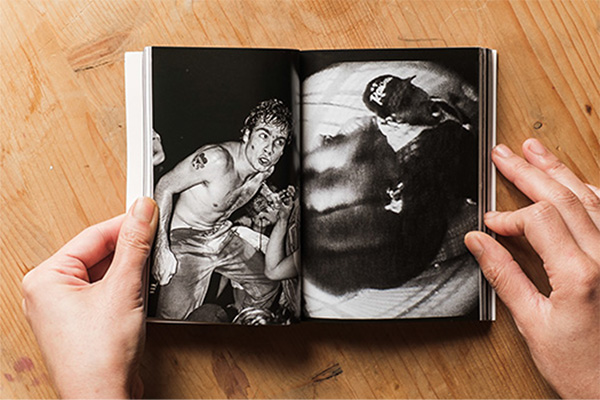Reaching us from the depths of the USA is the first issue of HIGHWAY, a biannual music magazine that comes as a nifty postcard-sized booklet. Firmly grounded in a black & white fanzine / DIY / post-punk aesthetic, its content is refreshingly eclectic and hands-on, ranging from experimental sound projects to electronic producers to punk and New Wave in former Yugoslavia. Instead of doing the same tiresome interchangeable portraits of the next new hot thing around the corner that we believe have helped to all but kill off the music press (as if the hype machine had not emigrated to the Internet a decade ago), HIGHWAY presents a political, almost anthropological survey of music culture.
We were intrigued, so we asked our friend and occasional contributor, Vicente Gutierrez, the mind behind HIGHWAY, to share a few ideas with us:
–––
Maybe no other genre has suffered as much from the Internet as the music press – what was your motivation to start a new music magazine?
The music press is more vibrant than ever with more and more outlets as well as streaming services and revenue models presenting themselves one after another as savior. The number of great websites covering everything music-related like the latest songs, albums and even Twitter feuds leads me to comment that it’s not only print, but that online publications suffer from the internet itself too. Digital publishing practices have emerged which been reluctantly embraced by readers and publishers and we know it’s a willing compromise. It’s all fascinating and still in flux but I would add that reading about music online has a become a bit cluttered— in both visual and editorial terms. Sonically too, streaming music services play music non-stop, regardless of your mood, even limiting your ability to skip a song. More creative production is a great thing, and more sustainable creative production is even better, but we’ve seen countless music-related sites tire out with “farewell” posts still up. We all enjoy the online offerings and it is after all a golden age for journalism although with HIGHWAY, I’d say I was motivated to read and think about music and sound culture in an environment with less distractions and felt a compact, straight-forward, biannual publication would provide a personalized format.
HIGHWAY seems to aim beyond the confines of a music magazine as we know it – can you elaborate a little on your ideas behind it?
I thought the editorial should shift more towards highlighting, critiquing, creating and documenting the place of music and sound in our total environment. Not only in ‘public’ but within the ‘private’ mind as well. One reason is, we readers and listeners have more access to music than ever before. Another reason is because music can be taken as revelatory of our culture and behavior. In seeking that out, my encounters with people involved with music: the writers, the photographers, the documentarians, sound artists, the musicians themselves, label owners— and this wasn’t that revelatory— but what about their thoughts, concerns, doubts, celebrations or memories? This is a conversation worth having and it made me want to side step the emphasis on “the latest band” or the singer as the “spokesperson.” This led to artists contributing directly, writing their own thoughts. These subjects are revealing and when you talk with them we learn more about music outside of the mp3 feeding tube. The magazine aims to reflect our lives with music…the way we remember or the number of ways we are influenced or affected. It’s not aimless, it aims to be applicable.
Whereas magazine apps are generally considered dead, HIGHWAY starts out with both a print version and digital app – what was your reasoning for it, and does the app offer different features than the print version?
From the beginning the magazine was meant to be a companion and since people bring their iPhones, iPods, iPads to more and more places it seemed like a match worth exploring. I think there’s potential in the mobile reading space as most people with iOS devices actually focus in and read news, blogs, websites, eBooks or visual content or social media wherever they are. I also knew it would be a challenge to get our first issue out internationally with shipping costs on top of printing costs so the digital transmission of our stories allows interested and able readers to access our stories anywhere. The digital app is a simpler presentation of the stories from the magazine and while there are no additional features, there are some updates planned.
mono.kultur has held the status of smallest magazine for many years and with pride, but HIGHWAY is pocket-sized – what was the idea behind the format?
What I’ve always liked about mono.kultur is the micro-focus on one personality with what I would call a ‘high simplicity.’ The approach encourages immersion and I also think your publishing schedule enhances that. With HIGHWAY, I wasn’t aiming to be the smallest magazine and I know of other publications that are even smaller! But I did notice the strength of the pocket-sized reader when I was on the crammed subways of Tokyo. A visit to a bookstore in Japan will present shelves of novels in pocket-sized format. I knew I wanted the magazine to be immersive and in your face, to encourage music exploration via cues and references, as well as be a conversation-starter. I also wanted readers to bring the magazine anywhere and it not get folded, rolled or damaged and then have its shelf-life brought into question. HIGHWAY fits in your back pocket, bag or on your bookshelf just right and if you’re done with it you can give it to someone else. Early on I felt we would have a challenge getting it into other shops but I think we’re off to a good start.
Visually, HIGHWAY picks up from the fanzine DIY postpunk aesthetics – was that a conscious decision and why?
That’s a great question. I laughed when a friend said it reminded him of Bauhaus’ first LP cover. It wasn’t intentional but I’ll say there was no way around how textual it was so we just said we’d come back to it. When it was time to print, the look still made sense with the editorial. We tried to give the images on the cover prominence and so that’s one reason the images wrap the binding. I also didn’t want a dominant headmaster nor a features hierarchy which would put just one artist on the cover. To entertain the post punk parallel I would say we’re conscious about being experimental and yet, consistent and resolute. I’ll say volatility and unpredictability are infused but at the same time, that statement itself is stable and consistent. We still have some rhythm, as can be seen in the consistency of the opening pages of each story. Like our punk predecessors and the post-punks after them I would say there is a general sense of dissatisfaction with the status quo. Let’s remember that these artists believed they lived in dismal times and expressed themselves along an alternative vector. The aesthetic shift initiated— at times brash— was accompanied by a lyrical range from the idiosyncratic, existential and political and made a separation increasingly clear. Through the magazine, and the responses we’ve received, I feel a shift, I feel a separation. I wanted the magazine to bring some radical critique to not only music, but also a critique to the perception of music. The punks, and those involved with post-punk and hardcore, were smart, with a provocative worldview. I’m reminded of the late Malcom Mclaren, the way he commented that the dominant culture today makes it cool to be stupid and has convinced everyone that life is a talent show. Great music or our personal favorite albums, will always make us feel good but there’s a lot more to the story than that.




